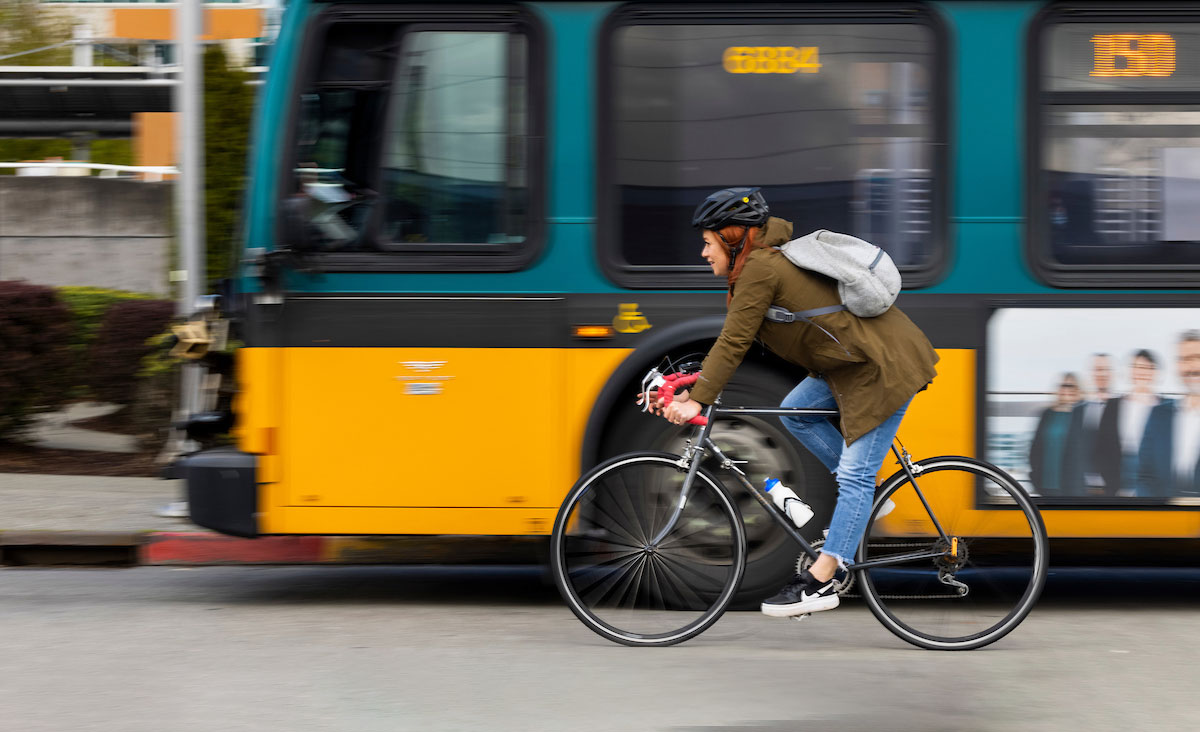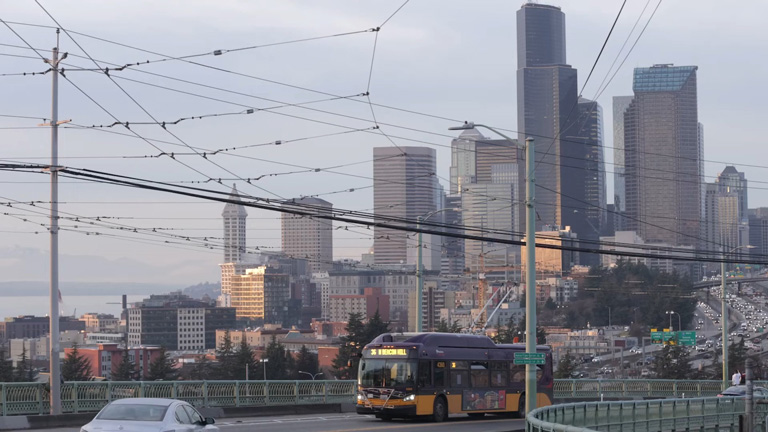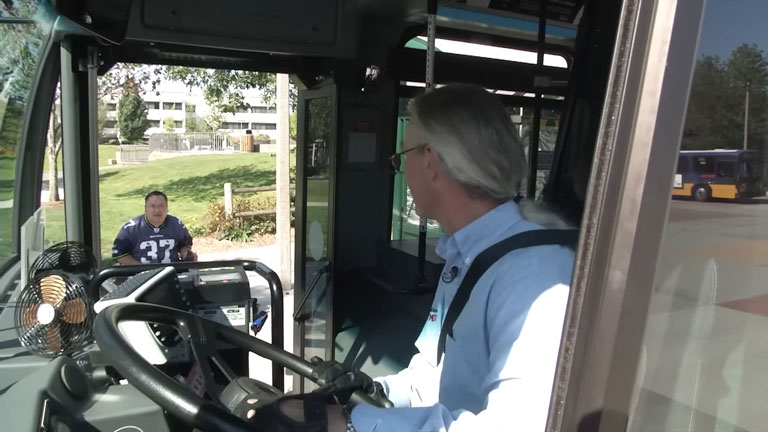Care
Through thousands of engagements each year, the Behavioral Health Support Team offers cold weather supplies, connections to community partners, de-escalation interventions, food, hygiene items and shelter referrals. In addition, our Metro Safety Ambassadors—in their blue jackets—greet riders and provide support.
Clean
The Facilities and Vehicle Maintenance Teams clean every bus, shelter and terminal. See something amiss? Go to kingcounty.gov/metro/ride to let us know. We also are grateful for cities and towns supporting a positive door-to-door experience and investing in bike paths, bus lanes, lighting, sidewalks and more.
Presence
To deter and respond to security challenges, Metro more than doubled the number of Transit Security Officers, expanded their areas and routes, and moved to 24/7 coverage. We’re adding more Metro Transit Police officers, too.
Reliable
We hear you. When you know your bus will arrive on time, you have greater confidence in the rest of our transit system, too. To keep you moving, we’ve hired more full-time bus operators, mechanics and other positions. We also provide information to plan your trip via apps, digital signs, email, text and our website.
Clear expectations
We've updated our Code of Conduct in partnership with our riders, community members and Metro employees. The new signs are easier to understand, more visual and multilingual. You'll see and hear reminders to keep yourself and others safe, to pay the fare, and to respect the driver and fellow passengers.
- For safety, look up and listen. Be aware of what's going on around you, especially when crossing the street. Don't assume cyclists and vehicle drivers can see you.
- Never run after or alongside a bus. The bus operator may not be able to see you. Also, you could put yourself or others at risk by creating a distraction.
- Allow passengers to exit the bus before you board.
- When possible, stay clear of doors and keep the aisles clear. Keep your head, arms and all objects inside bus windows.
- On crowded buses, please move to the back of the bus to make room for others.
- If you are standing on the bus, hold onto the handrail in case the bus stops quickly or turns.
- Signal the bus operator at least one block before your stop so they have sufficient time to stop smoothly.
- Hold onto the railing when exiting the bus. Bus steps and sidewalks can become slippery from rain. As you leave the bus, watch for cars.
- Do not cross in front of a Metro bus at a bus stop. Wait until the bus leaves the stop, and then cross carefully.
Wheelchair safety
- Each bus stop is clearly identified as to its accessibility. Bus stop accessibility information is also available via Metro's Customer Information Office and Metro's Trip Planner.
- All Metro buses are equipped with lifts or ramps at the front door.
- Alert the driver to deploy the lift or ramp.
- Wheelchair and mobility aid users have designated areas reserved at the front of the bus.
- The bus operator can help you secure your wheelchair or mobility aid.

- Be predictable: Cyclists should try to stay in a consistent position visible to drivers. If you can't see the bus mirrors, then the bus driver can't see you.
- Passing: Pass a bus only on the left. Bus drivers are trained to share the road with bicyclists and other traffic, but they're paying attention to many things at once.
- Intersections: Never position yourself to the right of a bus at an intersection. Sometimes it may look as though a bus is going straight when it's setting up for a right turn.

 Translate
Translate






